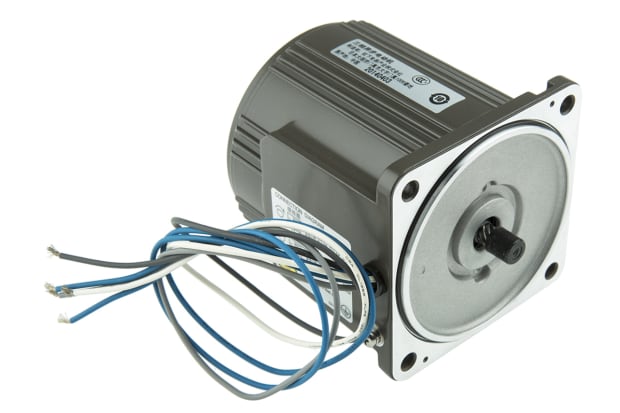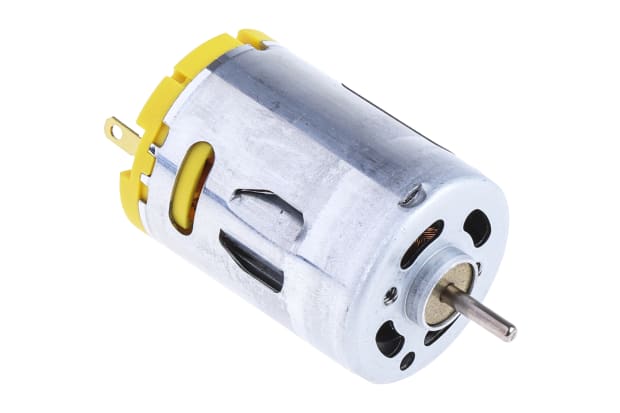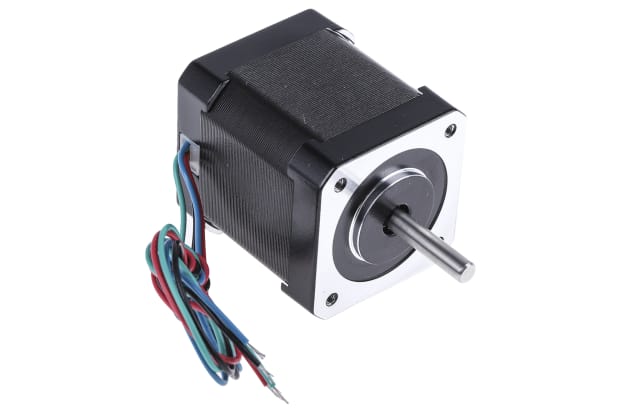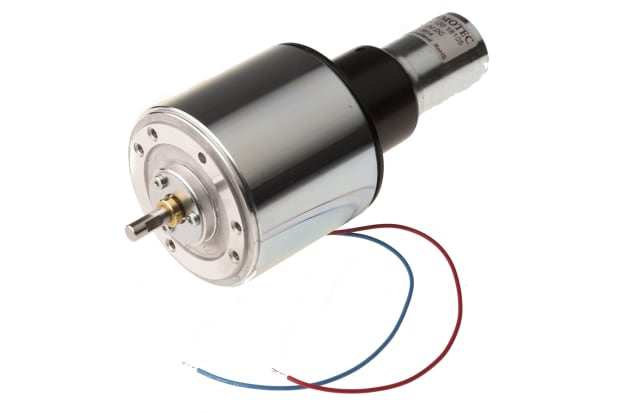- Published 11 Jan 2023
- Last Modified 3 Jun 2024
- 9 min
The Complete Guide to AC Motors
In our complete guide, we look at what AC motors are, how they work and what they’re used for, as well as the different types that are available.

What are AC motors?
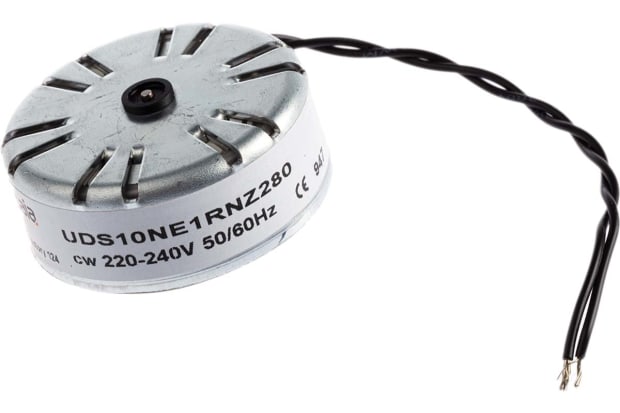
An AC motor is a common type of electric motor, driven by an alternating current. Like the majority of effective practical motors used in everyday industrial applications (as well as in hobbyist projects, domestic goods, and all manner of other professional equipment and consumer products), AC motors offer a relatively efficient method of producing mechanical energy from a simple electrical input signal.
AC motors are distinguished from many other types of electrical motor - and from the somewhat more familiar DC (direct current) motors in particular - by several important criteria. The most fundamental of these is the fact that an AC motor relies specifically on alternating the flow of current around its circuit to produce efficient mechanical energy. We’ll discuss this unique process in slightly more depth over the following sections of this guide.
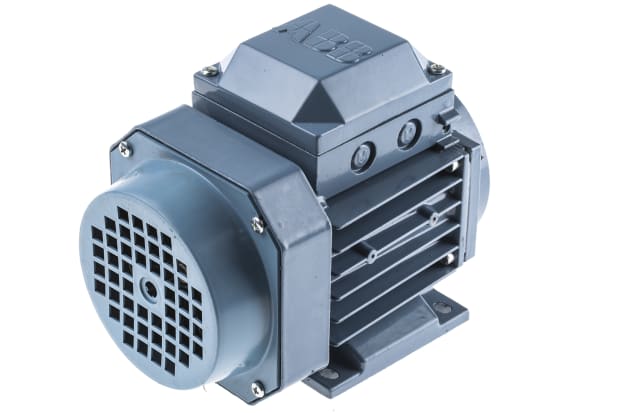
AC motors are also distinct from DC motors in that most AC motors do not include brushes. This means there’s often a greatly reduced need for maintenance and parts replacement on an AC motor, and most users generally expect them to have a longer average life expectancy as a result. Also unlike DC motors, the output speed for many types of AC motor is typically dictated by a frequency drive control - again, we’ll briefly outline a range of potential variations to the basic AC motor model a little further on in this guide.
AC motors are frequently used in a diverse catalogue of very familiar consumer products and industrial equipment, thanks mainly to their durability, low manufacturing costs, general affordability and ease of operation. Some typical uses of AC motors at home and in the workplace might include:
In this quick introductory guide for anyone looking to choose or buy AC motors online, we’ll touch briefly on the various traits and workings of different types of AC motor. We’ll also look at the potential pros and cons of each type you’ll generally find on sale from a wide range of component suppliers and manufacturers on today’s market.
How do AC motors work?

As noted above, the key characteristic that really marks AC motors out as distinct from many other motor types - most notably DC motors - is the fact that they specifically run on alternating current. There are other differences too, but this one is key in gaining a basic understanding of exactly how AC motors work.
An alternating current or charge - generally abbreviated to AC, hence AC motor - is one whose flow direction around a circuit is reversed at regular intervals. (This trait of switching current direction also means that the voltage on an AC circuit changes periodically.) By contrast, a DC or direct current only flows one way around a circuit, and thus voltage on a DC circuit remains relatively constant.
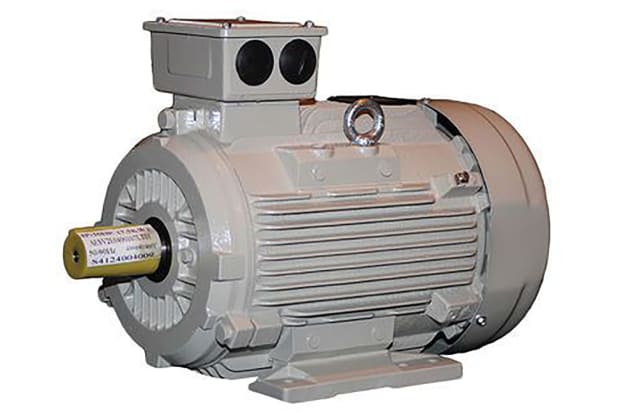
AC currents, and by extension AC motors, rely on a device called an alternator to produce this alternating charge direction. An alternator is a specialised type of electrical generator, in which an electromagnetic field (EMF) is typically created when electricity is passed through a spinning shaft (the rotor), which itself turns around or within a set of static wire coils (the stator). The resulting EMF switches direction, or polarity, as the rotor turns in relation to the stator.
Because an EMF created by a charged rotor turning on fixed axis will switch polarity at set points relative to the stator, the periodic reversal of current direction in an AC motor happens at regular and predictable intervals. In practice, the alternator and current on the AC circuit behave a bit like a piston or paddle moving water around a ducting system - as the piston moves in and out at a constant speed, it in turn pushes then pulls the water back and forth through the conduit.
As previously noted, another important difference between AC and DC motors is that AC motors don’t feature any brushes. In a typical DC motor, the brushes are what conduct electricity directly from the mains supply to the armature (the power-producing component), which is why a DC motor is sometimes known as a conduction motor.
Conversely, certain brushless AC motors are often given as examples of an induction motor, as the process of generating an alternating charge from an EMF via a rotor and stator is known as (electro) magnetic induction.
Different types of AC motors
There are numerous different AC motor types available on today’s market, each of which has slightly different operating characteristics and output abilities. Among the important specifications you’ll need to take note of when planning a purchase are such factors as:
Motor type (this might commonly include)
This describes the method of AC distribution around the circuit, and will affect the efficiency and smoothness of power delivery for the AC motor running at a given power draw, i.e:
Examples of popular and reliable motor manufacturers typically include:
Regardless of the many peripheral specs and details the manufacturer guidelines might go into, the key differentiation to be made between most basic types of AC motor is to do with how their rotors are constructed, as this will often dictate their range of practical capabilities.
As with all such electrical components, the best choice for any given task will depend on the specifics of the application and the type of role you need the AC motor to fulfil. In the sections below, we’ve outlined some of the more common categories and subtypes you’re likely to encounter when shopping for AC motors online.

Induction motors
As outlined above, an induction motor (or a rotating transformer, as they’re less commonly called) is a specific type of AC motor assembly that relies on a spinning, electrically charged rotor to create an EMF around a stator, and thus produce the vital alternating current that the AC motor can then convert into mechanical energy.
Induction AC motors of this kind are also known as asynchronous motors, because the output rotor generally turns at a slower rate than the frequency being supplied to it at any given time. In other words, the motor spins ‘out of sync’ with the power being supplied.
This is necessary because of another key characteristic of a true induction motor; namely that a charge created through electromagnetic induction is the only source of electrical ‘excitement’ the armature receives. If the rotor turned at the exact same speed as the rotating magnetic field on the stator, no current would be induced, and the armature would require another source of excitement in order to generate power. This is what happens in a DC motor, where the current is directly conducted to the armature, or in a synchronous AC motor (see below).

Synchronous motors
A synchronous AC motor is a special type in which the output rotor speed is directly aligned - ’in sync’, as it were - with the rate of the alternating current being supplied to it. Whereas this would tend to induce no current under a standard AC induction or asynchronous motor construction, the synchronous AC motor typically has additional components fitted, known as slip rings, which allow for current transmission between the motor’s rotating and fixed parts.
Slip rings are electromechanical devices that allow electrical signals to be transmitted through electromechanical systems constructed from components that need to rotate while generating power. In the case of a synchronous AC motor, the slip rings are what generate the necessary magnetic field around the rotor, and thus allow it to turn at the same rate as the alternating current being supplied without breaking the flow of current.
In summary then, AC synchronous motors are so-called because the speed of the rotor is directly proportional to the rotating magnetic field of the stator. They tend to be the preferred option wherever a higher degree of accuracy is an important factor in the application, such as in clocks and other timing devices.

Squirrel cage motors
Squirrel cage motors are a subtype of asynchronous AC induction motor that use cage rotors - a simple, rugged design featuring a cylinder made from solid metal bars used for conducting current through the rotor - instead of a series of wound coils.
Because the conductive rotor bars involve no moving contacts within the rotor mechanism itself (they’re permanently short-circuited by being embedded into end rings), squirrel cage motors are seen as the more durable, less maintenance-heavy option, and are considerably cheaper to produce and buy than wound or slip ring rotors.
The downside is that the permanent short-circuit construction of a squirrel cage means that no external resistors can be connected in series to the circuit - in other words, you can’t control the current induced in the rotor winding beyond its fixed state. In practical terms, this generally means that they require a high starting current, and initially generate quite low torque until up to full speed.
However, these perceived shortcomings can be mitigated to an extent using additional components such as variable speed drives (VSDs) and reduced voltage starters. Squirrel cage induction motors are often used in applications where a low starting torque and lack of speed control doesn’t present a major issue, for example in pumps and air compressors.
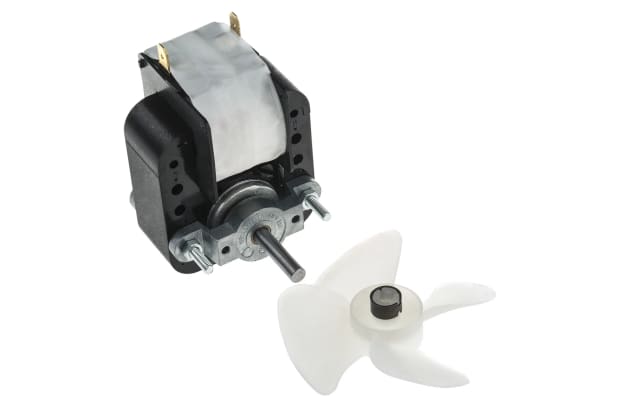
Shaded pole motors
Shaded-pole AC motors are a subtype of single-phase squirrel cage motor, defined by their use of an auxiliary rotor winding composed of either a copper ring or bar - this is known as a shading coil.
Unlike standard squirrel cage motors, they’re well-suited to operating at multiple speeds, albeit only producing a relatively small starting torque as compared to their torque at full speed. Shaded-pole motors are typically economical to make and cheap to buy, whilst being impressively reliable due to their simple, rugged construction.
For all of these reasons, shaded-pole motors are often one of the leading choices for AC motor assemblies to power fan arrays, as well as a range of other fractional horsepower devices with loads that are easily started such as:
- Record players
- Toys
- Electric clocks
- Hair dryers
- Other small instruments
Related product areas
Please click the links below to view some of our related AC motor products.



